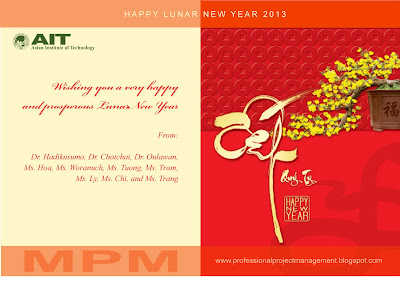In recent years, Vietnam has been
undergoing a very rapid and drastic economic and managerial reform so as to
approach the world integration. For a developing country from the poor and long
past agriculture like Vietnam, construction is obviously required as the tidal
force to build stepping stones. In fact, construction is account for about one
– third of gross capital formation to any economy in transition. It is reported
that expenditures on infrastructure construction in Vietnam have increased by
6.4%, from US$17.1 million in 2004 to US$18.2 million in 2005. From 2005 to
2009, the volume of investment in infrastructure is estimated to increase two
times. More and more, the Asian Development Bank had sanctioned loans worth
US$997.5 million to the government for deploying activities in transport and energy,
leading to active growth in infrastructure spending over the past few years. It
is the vigorous construction of key infrastructure that has laid an essential
foundation for the development of the country.
Furthermore, the rate of urbanization is
supposed to increase from 26.5% in 2005 to 31.6% in 2015. However, the
development also reveals a deficiency of human resources’ capacity and
technology to assure the quality of construction works. The number of accidents
at construction sites and poor-quality infrastructure works has reached
alarming figures. It is reported that accidents in construction, transport and
industry projects make up the major proportion of labor accidents causing
deaths in Vietnam. In 2008, the figure was almost 30% but it increased sharply
to above 50% in 2009 (MOLISA). Occurrence of serious construction accidents or
even the collapse of some large-scale infrastructure has caused huge financial
and human loss and cast doubt on the reliability of construction works.
Especially, when the public infrastructure is mentioned, it involves in the
control and reputation of the government. Hence, enhancing construction quality
assurance and labor safety is one of the top concerns of leaders of Ministry of
Construction and concerned agencies.
Mr. Le
Quoc Anh made a case study aimed to: (i) study the current quality management
regulation in Vietnam; (ii) discuss the strength and weakness of quality
control & quality assurance system in Vietnam; and (iii) study and analyze
the application of this quality in a project
Conclusion
As playing an important role in
construction management, the quality assurance system of Vietnam government is
supposed to audit and certify the quality of public infrastructure in the true
and actual fact, not in theory or paperwork. As a developing country with the
economy in transition and the huge volume in fundamental infrastructure
construction, Vietnam is calling for the foreign investment, even in the state
owned works, so the legal framework of Vietnam is hoped to become comfortable
and integrated with the common playing – ground for all inbound and out bound
investors. A transparent legal framework can assure the quality of
construction from the commencement to the finish.
On the analytical base, it can be seen
that the quality of construction works in Vietnam has been influenced by many
factors, happening in every phase of construction process or commission
process. Human or non-human factors have both direct and indirect influence on
the quality of construction works.
Besides, the legal system in Vietnam has
overlapped among regulations related to the quality. Vietnam government makes
law impractical, resulting in complicate mending or misunderstanding
application, even contrary among construction units.
Recommendation For Ha Noi – Hai Phong
Expressway Project
The VIDIFI recommendations that can be
proposed are as follows:
1. Increase the activeness for
supervision consultancy unit by assigning the right and acceptance for regular
works or categories. No need to wait for the acceptance from the investors.
2. The investors and the consultants
cooperate to review all project standards to restrict risks if material or
design changes.
3. Request contractors to change
construction methods properly with new standards.
His thesis
abstract is copied and posted below.
Abstract
In recent years, Vietnam has been
undergoing the very rapid and drastic economic and managerial reform so as to
approach the world integration. For a developing country from the poor and long
past agriculture like Vietnam, construction is obviously required as the tidal
force to build steeping stones. In fact, construction is account for about one
– third of gross capital formation to our economy in transition. However, the
drastic and rapid development in Vietnam also reveals a deficiency of human
resources’ capacity and technology to assure the quality of construction works.
The number of accidents at construction sites and poor-quality infrastructure
works has reached alarming figures. Hence, enhancing construction quality
assurance and labor safety is one of the top concerns of leaders of Ministry of
Construction and concerned agencies. This paper focuses on studying quality
assurance system (framework) of Vietnam government aiming to manage public
infrastructure projects. Throughout the study, the strength and weakness of the
system can be pointed out to discuss lessons learnt so that recommendation for
improvement of the legal framework can be demonstrated.




